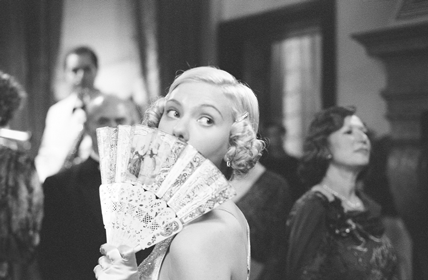“A Good Woman” proves faithful to “Lady Windermere”
When classic plays are made into movies, some trepidation naturally comes with the release—will the adaptation be faithful, will the cast stand up to the best performances, and how far will the director take artistic license? Fans of Oscar Wilde’s play “Lady Windermere’s Fan” rest assured. “A Good Woman” features two beautiful leading ladies, a talented supporting cast, a strong script, and stunning locales.
The film opens in 1930s New York on the “infamous and poor” Mrs. Erlynne (Helen Hunt), a woman of ill repute emerging penniless from another failed affair. Erlynne hocks her jewelry to pay for a cruise to Italy in search of a new benefactor among the vacationing aristocrats. Browsing through the ship’s ledger, she finds her mark—Robert Windermere (Mark Umbers), an American investment banker on vacation with his lovely, young wife Meg (Scarlet Johansson).
As in New York, Erlynne quickly becomes the target of gossip—with her seductive dress and gimlet eye toward rich men. She approaches Windermere as he is choosing a present for his wife’s 21st birthday and, displaying the erotic language of the fan, convinces him to buy the beautiful accessory.
Windermere is soon making clandestine visits to Erlynne’s bedroom, and leaving her large sums of money. One can only presume the two are having an affair. The gossip around the pair grows, yet does not dissuade the kind Lord Augustus (Tom Wilkinson) from pursuing Erlynne. Augustus, a.k.a. Tuppy, eventually proposes marriage to her. She haltingly accepts, until circumstance causes her to renege. Love prevails in the end, with no question as to whom the titular “good woman” refers.
The script, by Howard Himelstein, quickly asserts itself as faithful to Wilde’s spirit and legacy. Early in the film, we hear Lord Darlington and another gentleman parry, “Bigamy is having one wife too many.” “So is monogamy.” Wilde fans will recognize his clever throwaways throughout the film. Erlynne states, “If we’re always guided by other people’s thoughts, what’s the use of having our own?” Lord Darlington quips that the only thing worse than being talked about is not being talked about. One of the older men delivers the classic line, “Sausages and women––if you want to enjoy the experience, never watch the preparation.”
Fashionistas will go crazy over the wardrobes in “A Good Woman.” Having two beautiful women to dress means double the stunning 1930s-era fashions. Within the first 10 minutes of the film, Johansson appears in a tailored powder blue walking suit, a stylish printed wrap dress, and a stunning silk evening gown, with button-up silk gloves and a matching hat, in silver slate. Hunt is equally well dressed in sexy Italian wear, an evening gown with plunging décolleté, and a drop-dead gorgeous, yellow calf-length dress with stylized black scribbles on the diagonal. In fact, one of the pivotal scenes of the film relies on the fact that both Mrs. Windermere and Mrs. Erlynne have worn identical evening gowns to a party, and with their similar blond coifs, are mistaken for each other when viewed from behind.
The scenery is equally easy on the eyes, thanks to shooting in some amazing locales. The Italian Riviera comes complete with quaint villages and cobblestone streets, classic villas, and stunning orange-red sunsets.
And while it is at first tempting to question casting the luminous and lovely Johansson as the ingénue and the mousy, pedestrian Hunt as the seductress, both actors do an amazing job at bringing to life the characters Wilde created. Johansson, still coming into her own as an actress, allows her character to visibly mature throughout the course of the film. Hunt is not only sexy in the role, but adds a very human edge to the stock character of the seductress. Leaving the film as strong a character as she entered, she remains faithful to her opening words, “A lady always goes the way she came.”
gaycitynews.com


































